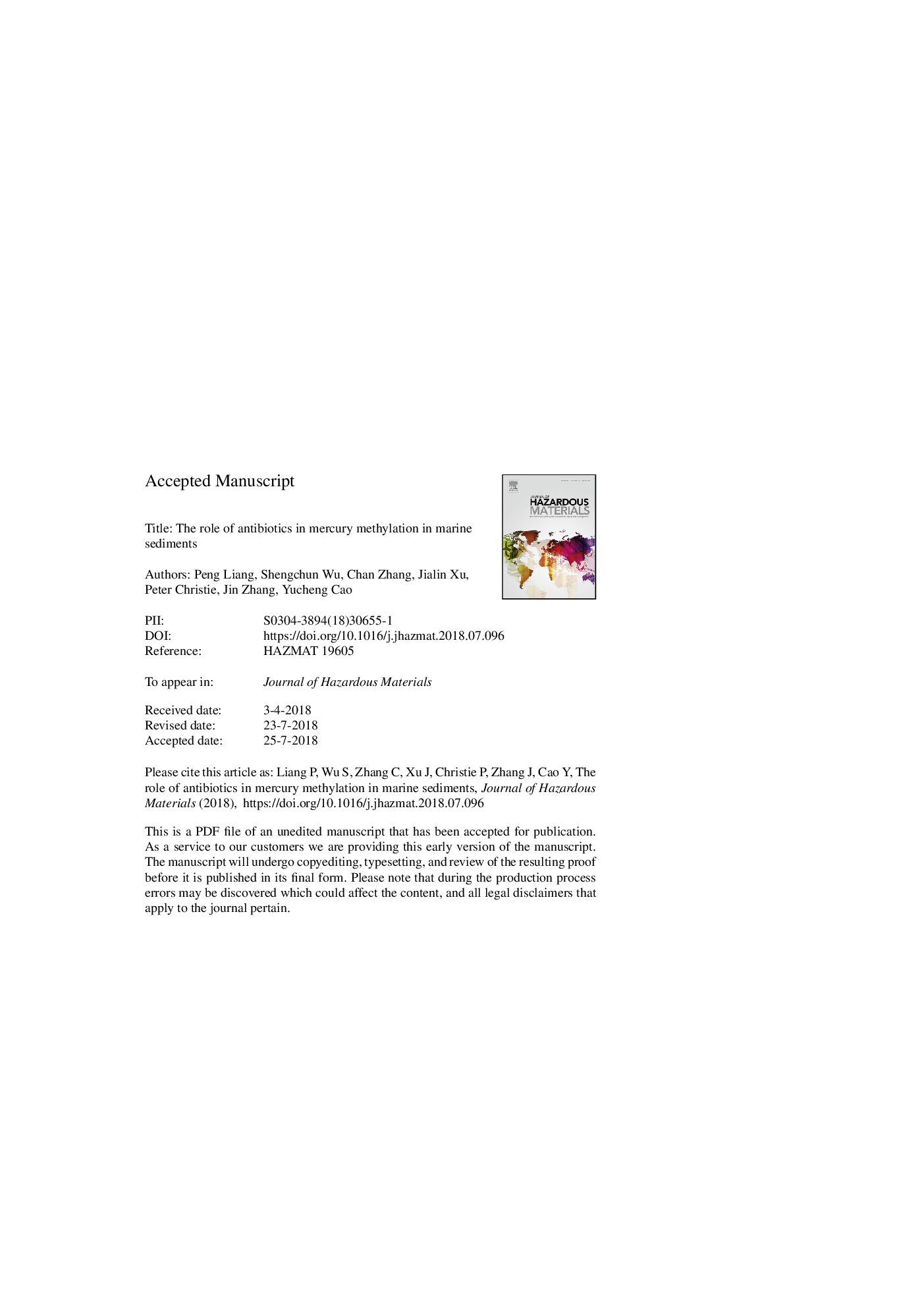| Article ID | Journal | Published Year | Pages | File Type |
|---|---|---|---|---|
| 6967673 | Journal of Hazardous Materials | 2018 | 22 Pages |
Abstract
The role of antibiotics commonly used in fish culture activities in methylmercury (MeHg) formation in mariculture sediments (MS) and in reference sediments (RS) was studied using simulation microcosms. MS and RS were split into three equal batches. Two batches were spiked with Hg(NO3)2 aqueous solution at levels of 2 and 8âmgâkgâ1 (dry weight basis) and the remainder served as a control batch. Tetracycline (TC) and oxytetracycline (OTC) (2.5âg and 10âg of each) were added to each treatment. Sediment THg concentration decreased during the culture period possibly due to complexation of Hg with the antibiotics resulting in the dissolution of Hg compounds from the sediment. More importantly, the MeHg concentration increased after 32 days together with a decrease in the concentrations of the antibiotics in the sediment. The complexation of TC or OTC with Hg resulted in the transport of electrons from TC or OTC to Hg2+ due to the high electronegativity of Hg2+. Subsequently, Hg2+ was reduced to Hg° which reacted with CH3+ derived from TC or OTC. The use of antibiotics may therefore promote the formation of MeHg in sediments.
Related Topics
Physical Sciences and Engineering
Chemical Engineering
Chemical Health and Safety
Authors
Peng Liang, Shengchun Wu, Chan Zhang, Jialin Xu, Peter Christie, Jin Zhang, Yucheng Cao,
